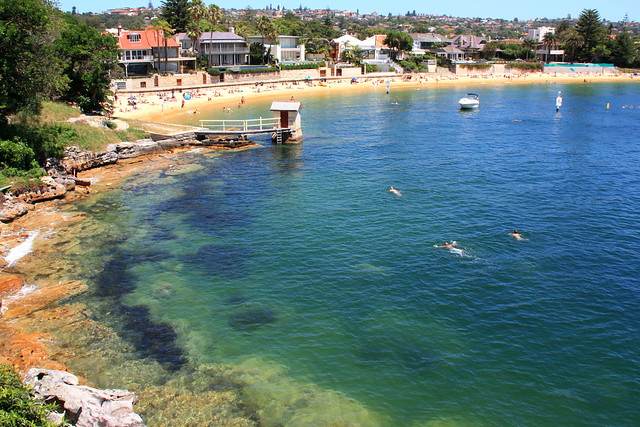Tourist places in Sydney Harbour
Port Jackson is the
natural harbour of Sydney. It is known for its spectacular natural beauty, and
in particular as the location of the Sydney Opera House and Sydney Harbour
Bridge. The area around the harbour foreshore contains pockets of bushland
which was once common around Sydney, containing a surprising range of native
animals.
1) Sydney
Opera House
The Sydney Opera House
is one of the most distinctive and famous 20th-century buildings, and one of
the most famous performing arts venues in the world. Situated on Bennelong
Point in Sydney Harbour, with parkland to its south and close to the equally
famous Sydney Harbour Bridge, the building and its surroundings form an iconic
Australian image. It was included in the Olympic Torch route in 2000 to the
Olympic stadium. It was the backdrop of some events for the Sydney 2000
Olympics, including the triathlon—which began at the Opera House—and the
yachting events on Sydney Harbour. The dramatic exteriors have not been matched
with technically superior interiors, and the Opera House's reputation as a
music venue has suffered as a result.
2) Sydney
Harbour Bridge
The Sydney Harbour
Bridge is the main crossing of Sydney Harbour carrying rail, vehicular, and
pedestrian traffic between the Sydney central business district (CBD) and the
North Shore. The dramatic water vista of the bridge together with the nearby
Sydney Opera House is an iconic image of both Sydney and Australia. The
South-east pylon for many years operated as lookout and tourist attraction,
containing a number of telescopes and antiquated arcade games which operated on
pennies, long after that currency had gone out of operation. The pylon has
recently been renovated and returned to its tourist function.
3) Bridge
Climb
Since 1998, BridgeClimb
has made it possible for tourists to climb the southern half of the bridge.
Tours run throughout the day, from dawn to dusk and are only cancelled for
electrical storms or high wind. Night climbs are also available. Groups of
climbers are provided with protective clothing appropriate to the prevailing weather
conditions and are given an orientation before climbing. During the climb,
attendees are secured to the bridge by a wire lifeline. Each climb begins on
the eastern side of the bridge and ascends to the top. At the summit, the group
crosses to the western side of the arch for the descent. Each climb is a
three-and-a-half-hour experience.
4) Historic
forts

The shores of Sydney
Harbour are home to a number of historic batteries, bunkers and forts, many of
which are now heritage listed. Some of these forts date back to 1871 and were
part of Sydney Harbours defence system that was designed to withstand a seaborn
attack. There are four historical fortifications located between Bradleys Head
and Middle Head on the north side of the harbour; the Middle Head Fortifications,
the Georges Head Battery, the Lower Georges Heights Commanding Position and a
small fort located on Bradleys Head. The forts were constructed from mostly
large sandstone blocks and consist of many tunnels, catacombs and underground
rooms.
5)
Watsons Bay

Watsons Bay sits on the
end of the South Head peninsula and takes its name from the sheltered bay and
anchorage on its western side, in Port Jackson. It provides some of the best
views across the harbour to the city of Sydney and the Harbour Bridge. The Gap
is an ocean cliff on the eastern side with views to Manly, North Head, and the
Pacific Ocean.
Watsons Bay is a mostly
residential area with some recreational areas and beaches, including one legal
nude beach. Some restaurants, cafes and the Watsons Bay Hotel are located here,
with Doyles on the Beach, one of the Sydney's most famous seafood restaurants,
located on the foreshore of Watsons Bay.The naval base HMAS Watson is located
nearby at South Head.





.jpg)